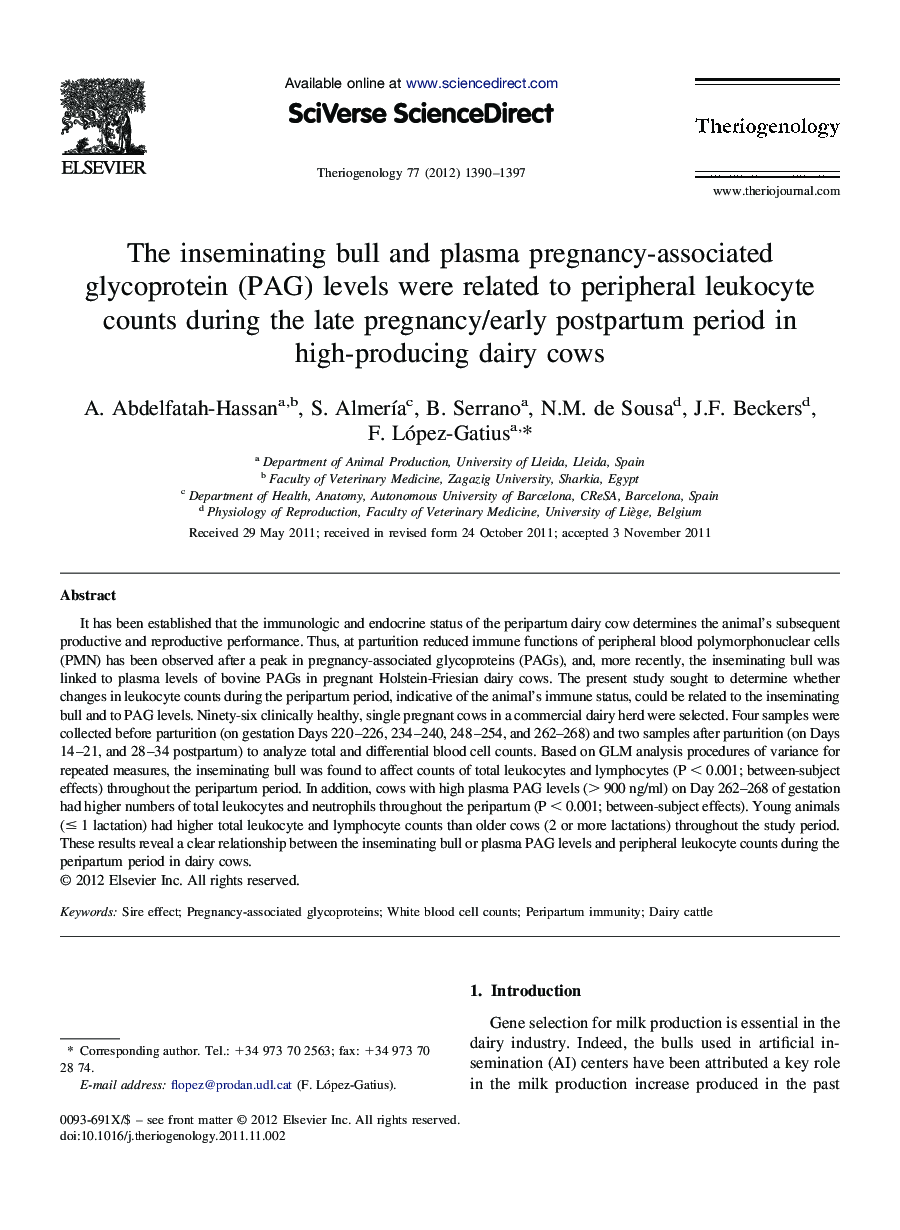| Article ID | Journal | Published Year | Pages | File Type |
|---|---|---|---|---|
| 10892335 | Theriogenology | 2012 | 8 Pages |
Abstract
It has been established that the immunologic and endocrine status of the peripartum dairy cow determines the animal's subsequent productive and reproductive performance. Thus, at parturition reduced immune functions of peripheral blood polymorphonuclear cells (PMN) has been observed after a peak in pregnancy-associated glycoproteins (PAGs), and, more recently, the inseminating bull was linked to plasma levels of bovine PAGs in pregnant Holstein-Friesian dairy cows. The present study sought to determine whether changes in leukocyte counts during the peripartum period, indicative of the animal's immune status, could be related to the inseminating bull and to PAG levels. Ninety-six clinically healthy, single pregnant cows in a commercial dairy herd were selected. Four samples were collected before parturition (on gestation Days 220-226, 234-240, 248-254, and 262-268) and two samples after parturition (on Days 14-21, and 28-34 postpartum) to analyze total and differential blood cell counts. Based on GLM analysis procedures of variance for repeated measures, the inseminating bull was found to affect counts of total leukocytes and lymphocytes (P < 0.001; between-subject effects) throughout the peripartum period. In addition, cows with high plasma PAG levels (> 900 ng/ml) on Day 262-268 of gestation had higher numbers of total leukocytes and neutrophils throughout the peripartum (P < 0.001; between-subject effects). Young animals (⤠1 lactation) had higher total leukocyte and lymphocyte counts than older cows (2 or more lactations) throughout the study period. These results reveal a clear relationship between the inseminating bull or plasma PAG levels and peripheral leukocyte counts during the peripartum period in dairy cows.
Related Topics
Life Sciences
Agricultural and Biological Sciences
Animal Science and Zoology
Authors
A. Abdelfatah-Hassan, S. AlmerÃa, B. Serrano, N.M. de Sousa, J.F. Beckers, F. López-Gatius,
